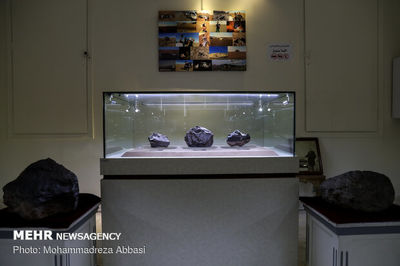The museum will put on display over 1,200 pieces, a majority of which have been collected in the past 15 years from across the country by Hojjat Kamali, a prominent meteorite spotter, collector and museum owner.
The museum will cooperate with different academic centers in the form of joint projects to identify and collect more of such outer space rocks throughout the country.
Many of the meteorites accommodated in the museum have been spotted in Lut Desert, central Iran. The scorching Lut Desert is now being considered to be one of the top areas in the world for finding meteorites, thanks to its unique parameters. In recent years, significant finds have been made, with the efforts of national and international teams of researchers.
Meteorites, whether more iron-rich or “stony,” are generally silvery or black, and therefore stand out in two major environments – sandy deserts, or icy realms. According to experts, the dry conditions of a desert help to preserve the space rocks in as original as condition as possible.
Source: Mehr News

